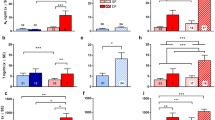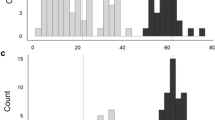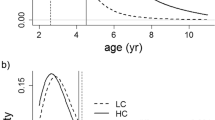Abstract
The relationship between reproductive and physiological stress hormones in vertebrates is poorly understood. In many species of mammals and especially in humans, the most widespread idea is that there is a negative relationship between them, i.e. higher stress levels are associated with lower testosterone levels. Likewise, the subordination stress paradigm supports that subordinates suffer greater stress in a competitive situation, while the dominant ones have higher levels of testosterone. However, this predominant idea of a negative relationship between testosterone and cortisol concentrations may be influenced by unnatural circumstances, such as chronic stress in humans or forced interactions between subordinates and dominants in laboratory or captivity. Some studies have reported that dominant males under natural conditions may show higher physiological stress and also higher testosterone levels than subordinates. But for this positive relationship, the question is whether there is a causal link or whether both hormones only coincide due to other factors. We hypothesized that testosterone should be related to physiological stress only as a result of individual males being subjected to stressful situations, such as intrasexual competition. We studied this topic in Iberian red deer (Cervus elaphus hispanicus) males in two types of populations with high and low levels of intrasexual competition. We found a positive relationship between faecal testosterone and cortisol metabolite levels, but also a significant interaction showing that this relationship occurs more intensely in populations with high competition level for mating. These results reinforce the positive relationship between both hormones under natural conditions and support the hypothesis that it is mediated by male-male competition for mates.


Similar content being viewed by others
References
Alin A (2010) Multicollinearity. Wiley Interdisciplinary Rev 3:370–374. https://doi.org/10.1002/wics.84
Andersson M (1994) Sexual selection. Princeton University Press, New Jersey, p 624. doi: https://doi.org/10.1515/9780691207278
Appleby M (1980) Social rank and food access in red deer stags. Behaviour 74:294–309. https://doi.org/10.1163/156853980X00519
Arteaga L, Bautista A, Martínez-Gómez M, Nicolás L, Hudson R (2008) Scent marking, dominance and serum testosterone levels in male domestic rabbits. Physiol Behav 94:510–515. https://doi.org/10.1016/j.physbeh.2008.03.005
Babak N (2015) Uncertainty analysis for species distribution models. R package version 1.1–15
Backström T, Heynen M, Brännäs E, Nilsson J, Magnhagen C (2015) Dominance and stress signalling of carotenoid pigmentation in Arctic charr (Salvelinus alpinus): lateralization effects? Physiol Behav 138:52–57. https://doi.org/10.1016/j.physbeh.2014.10.003
Baniel A, Cowlishaw G, Huchard E (2018) Context dependence of female reproductive competition in wild chacma baboons. Anim Behav 139:37–49. https://doi.org/10.1016/j.anbehav.2018.03.001
Barja I, Silván G, Rosellini S, Piñeiro A, González-Gil A, Camacho L, Illera JC (2007) Stress physiological responses to tourist pressure in a wild population of European pine marten. J Steroid Biochem Mol Biol 104:136–142. https://doi.org/10.1016/j.jsbmb.2007.03.008
Barja I, Silván G, Illera JC (2008a) Relationships between sex and stress hormone levels in feces and marking behavior in a wild population of Iberian wolves (Canis lupus signatus). J Chem Ecol 34:697–701. https://doi.org/10.1007/s10886-008-9460-0
Barja I, Silvá F, Rosellini S, Piñeiro A, Illera MJ, Illera JC (2008b) Quantification of sexual steroid hormones in faeces of Iberian wolf (Canis lupus signatus): a non-invasive sex typing method. Reprod Domest Anim 43:701–707. https://doi.org/10.1111/j.1439-0531.2007.00974.x
Barja I, Escribano-Ávila G, Lara-Romero C, Virgós E, Benito J, Rafart E (2012) Non-invasive monitoring of adrenocortical activity in European badgers (Meles meles) and effects of sample collection and storage on faecal cortisol metabolite concentrations. Animal Biology 62(4):419–432
Bates D, Mächler M, Bolker B, Walker S (2015) Fitting linear mixed-effects models using lme4. J Stat Softw 67:1–48. https://doi.org/10.18637/jss.v067.i01
Blanchard RJ, McKittrick CR, Blanchard C (2001) Animal models of social stress: effects on behavior and brain neurochemical systems. Physiol Behav 73:261–271. https://doi.org/10.1016/S0031-9384(01)00449-8
Carranza J, Valencia J (1999) Red deer females collect on male clumps at mating areas. Behav Ecol 10:525–532. https://doi.org/10.1093/beheco/10.5.525
Carranza J, Álvarez F, Redondo T (1990) Territoriality as a mating strategy in red deer. Anim Behav 40:79–88. https://doi.org/10.1016/S0003-3472(05)80667-0
Carranza J, Alarcos S, Sánchez-Prieto C, Valencia J, Mateos C (2004) Disposable-soma senescence mediated by sexual selection in an ungulate. Nature 432:215–218. https://doi.org/10.1038/nature03004
Carranza J, Pérez-Barbería J, Mateos C, Alarcos S, Torres-Porras J, Pérez-González J, Sánchez-Prieto CB, Valencia J, Castillo L, de la Peña E, Barja I, Seoane J, Reglero M, Flores A, Membrillo A (2020) Social environment modulates investment in sex trait versus lifespan: red deer produce bigger antlers when facing more rivalry. Sci Rep 10:9234. https://doi.org/10.1038/s41598-020-65578-w
Clutton-Brock TH, Albon SD (1989) Red deer in the highlands. Blackwell Scientific, Oxford
Clutton-Brock TH, Guinness FE, Albon SD (1982) Red deer: behaviour and ecology of two sexes. University of Chicago Press, Chicago
Cornwallis CK, Birkhead TR (2008) Plasticity in reproductive phenotypes reveals status-specific correlations between behavioural, morphological and physiological sexual traits. Evolution 62:1149–1161. https://doi.org/10.1111/j.1558-5646.2008.00346.x
Creel S (2001) Social dominance and stress hormones. Trends Ecol 16:491. https://doi.org/10.1016/S0169-5347(01)02227-3
Creel S (2005) Dominance, aggression and glucocorticoid levels in social carnivores. J Mammal 86:255–264. https://doi.org/10.1644/BHE-002.1
Creel S, Creel NM, Monfort SL (1996) Social stress and dominance. Nature 379:212. https://doi.org/10.1038/379212a0
Creel S, Dantzer B, Goymann W, Rubenstein DR (2013) The ecology of stress: effects of the social environment. Funct Ecol 27:66–80. https://doi.org/10.1111/j.1365-2435.2012.02029.x
Cumming DC, Quigley ME, Yen SSC (1983) Acute suppression of circulating testosterone levels by cortisol in men. J Clin Endocrinol Metab 57:671–673. https://doi.org/10.1210/jcem-57-3-671
de la Peña E, Martín J, Carranza J (2019) The intensity of male-male competition may affect chemical scent constituents in the dark ventral patch of male Iberian red deer. PLoS ONE 14(9):e0221980. https://doi.org/10.1371/journal.pone.0221980
de la Peña E, Martín J, Barja I, Pérez-Caballero R, Acosta I, Carranza J (2020a) a) The immune challenge of mating effort: steroid hormone profile, dark ventral patch and parasite burden in relation to intrasexual competition in male Iberian red deer. Integr Zool. https://doi.org/10.1111/1749-4877.12427
de la Peña E, Martín J, Barja I, Carranza J (2020b) Testosterone and the dark ventral patch of male red deer: the role of the social environment. Sci Nat 107:18. https://doi.org/10.1007/s00114-020-01674-1
Doerr P, Pirke KM (1976) Cortisol-induced suppression of plasma testosterone in normal adult males. J Clin Endocrinol Metab 43:622–629. https://doi.org/10.1530/acta.0.080S055a
Eager CD (2017) Standardize: tools for standardizing variables for regression in R. R package version 0.2.1. https://CRAN.R-project.org/package=standardize.
Escribano-Ávila G, Pettorelli N, Virgós E, Lara-Romero C, Lozao J, Barja I, Cuadra FS, Puerta M (2013) Testing cort-fitness and cort-adaptation hypotheses in a habitat suitability gradient for roe deer. Acta Oecol 53:38–48. https://doi.org/10.1016/j.actao.2013.08.003
Fletcher TJ (1978) The induction of male sexual behavior in red deer (Cervus elaphus) by the administration of testosterone to hinds and estradiol-17β to stags. Horm Behav 11:74–88. https://doi.org/10.1016/0018-506X(78)90059-4
Folstad I, Karter AJ (1992) Parasites, bright males, and the immunocompetence handicap. Am Nat 139:603–622. https://doi.org/10.1086/285346
Gaspar-López E, Landete-Castillejos T, Estevez JA, Ceacero F, Gallego L, García AJ (2010) Biometrics, testosterone, cortisol and antler growth cycle in Iberian red deer stags (Cervus elaphus hispanicus). Reprod Dom Anim 45:243–249. https://doi.org/10.1111/j.1439-0531.2008.01271.x
Goss RJ (1968) Inhibition of growth and shedding of antlers by sex hormones. Nature 220:83–85. https://doi.org/10.1038/220083a0
Goss RJ (1983) Deer antlers: regeneration, function and evolution. Academic Press, Cambridge
Iglesias-Merchán C, Horcajada-Sánchez F, Diaz-Balteiro L, Escribano-Ávila G, Lara-Romero C, Virgós E, Planillo A, Barja I (2018) A new large-scale index (AcED) for assessing traffic noise disturbance on wildlife: stress response in a roe deer (Capreolus capreolus) population. Environ Monit Assess 490:185. https://doi.org/10.1007/s10661-018-6573-y
Ingram JR, Crockford JN, Matthews LR (1999) Ultradian, circadian and seasonal rhythms in cortisol secretion and adrenal responsiveness to ACTH and yarding in unrestrained red deer (Cervus elaphus) stags. J Endocrinol 162:289–300. https://doi.org/10.1677/joe.0.1620289
Karubian J, Lindsay WR, Schwabl H, Webster MS (2011) Bill coloration, a flexible signal in a tropical passerine bird, is regulated by social environment and androgens. Anim Behav 81:795–800. https://doi.org/10.1016/j.anbehav.2011.01.012
Lincoln G, Guinness FA, Short RV (1972) The way in which testosterone controls the social and sexual behavior of the red deer stag (Cervus elaphus). Horm Behav 3:375–396. https://doi.org/10.1016/0018-506X(72)90027-X
Ludecke D (2018) ggeffects: Tidy data frames of marginal effects from regression models. J Open Source Softw 3:772. https://doi.org/10.21105/joss.00772
Lynch JW, Ziegler TB, Strier KB (2002) Individual and seasonal variation in fecal testosterone and cortisol levels of wild male tufted capuchin monkeys, Cebus apella nigritus. Horm Behav 41:275–287. https://doi.org/10.1006/hbeh.2002.1772
Malo AF, Roldan ERS, Garde JJ, Soler AJ, Vicente J, Górtazar C, Gomendio M (2009) What does testosterone do for red deer males? P R Soc B Biol Sci 276:971–980. https://doi.org/10.1098/rspb.2008.1367
Martín J, Carranza J, López P, Alarcos S, Pérez-González J (2014) A new sexual signal in rutting male red deer: age related chemical scent constituents in the belly black spot. Mammal Biol 79:362–368. https://doi.org/10.1016/j.mambio.2014.07.005
Mateos C (2005) The subordination stress paradigm and the relation between testosterone and corticosterone in male ring-necked pheasants. Anim Behav 69:249–255. https://doi.org/10.1016/j.anbehav.2004.03.010
McEwen BS, Stellar E (1993) Stress and the individual: mechanisms leading to disease. Arch Intern Med 153:2093–2101. https://doi.org/10.1001/archinte.1993.00410180039004
McGraw KJ, Ardia DR (2003) Carotenoids, immunocompetence, and the information content of sexual colors: an experimental test. Am Nat 162:704–712. https://doi.org/10.1086/378904
Muller MN, Wrangham W (2004) Dominance, cortisol and stress in wild chimpanzees (Pan troglodytes schweinfurthii). Behav Ecol Sociobiol 55:332–340. https://doi.org/10.1007/s00265-003-0713-1
Palanza P, Gioiosa L, Parmigiani S (2001) Social stress in mice: gender differences and effects of estrous cycle and social dominance. Physiol Behav 73:411–420. https://doi.org/10.1016/S0031-9384(01)00494-2
Palme R, Robia C, Messmann S, Hofer J, Möstl E (1999) Measurement of faecal cortisol metabolites in ruminants: a non-invasive parameter of adrenocortical function. Wien Tierärztl Monat 86:237–241. https://doi.org/10.1023/A:1014095618125
Pavvitt AT, Walling CA, Möstl E, Pemberton JM, Kruuk LEB (2015) Cortisol but not testosterone is repeatable and varies with reproductive effort in wild red deer stags. Gen Comp Endocrinol 222:62–68. https://doi.org/10.1016/j.ygcen.2015.07.009
Pérez-González J, Carranza J (2009) Female-biased dispersal under conditions of low male mating competition in a polygynous mammal. Mol Ecol 18:4617–4630. https://doi.org/10.1111/j.1365-294X.2009.04386.x
Pérez-González J, Carranza J (2011) Female aggregation interacts with population structure to influence the degree of polygyny in red deer. Anim Behav 82:957–970. https://doi.org/10.1111/j.1365-294X.2009.04386.x
Pérez-González J, Frantz AC, Torres-Porras J, Castillo L, Carranza J (2012) Population structure, habitat features and genetic structure of managed red deer populations. Eur J Wildlife Res 58:933–943. https://doi.org/10.1007/s10344-012-0636-0
Rasmussen HB, Ganswindt A, Douglas-Hamilton I, Vollrath F (2008) Endocrine and behavioral changes in male African elephants: linking hormone changes to sexual state and reproductive tactics. Hormones and Behavior 54(4):539–548
Rosvall KA (2011) Intrasexual competition in females: evidence for sexual selection? Behav Ecol 22:1131–1140. https://doi.org/10.1093/beheco/arr106
RStudio Team (2016) RStudio: integrated development for R. RStudio, Inc., Boston, MA. http://www.rstudio.com/
Sapolsky RM (2005) The influence of social hierarchy on primate health. Science 308:648–652. https://doi.org/10.1126/science.1106477
Schuett GW, Harlow HJ, Rose JD, Van Kirk EA, Murdoch WJ (1996) Levels of plasma corticosterone and testosterone in male copperheads (Agkistrodon contortrix) following staged fights. Horm Behav 30:60–68. https://doi.org/10.1006/hbeh.1996.0009
Stewart PM (2003) The adrenal cortex. In: Larsen PR, Kronenberg HM, Melmed S, Polonsky KS (eds) Williams textbook of endocrinology. Saunders, Philadelphia, pp 491–551. doi: https://doi.org/10.1097/00060793-200106000-00001
Strier KB, Ziegler TB, Wittwer DJ (1999) Seasonal and social correlates of fecal testosterone and cortisol levels in wild male muriquis (Brachyteles arachnoides). Horm Behav 35:125–134. https://doi.org/10.1006/hbeh.1998.1505
Suttie JM, Linconl GA, Kay RNB (1984) Endocrine control of antler growth in red deer stags. J Reprod Fer 71:7–15. https://doi.org/10.1530/jrf.0.0710007
Torres-Porras J, Carranza J, Pérez-González J (2009) Combined effects of drought and density on body and antler size of male Iberian red deer (Cervus elaphus hispanicus): climate change implications. Wildlife Biol 15:213–221. https://doi.org/10.2981/08-059
Torres-Porras J, Carranza J, Pérez-González J, Mateos C, Alarcos S (2014) The tragedy of the commons: unsustainable population structure of Iberian red deer in hunting estates. Eur J Wildlife Res 60:351–357. https://doi.org/10.1007/s10344-013-0793-9
Vilela S, Alves da Silva A, Palme R, Ruckstuhl KE, Sousa JP, Alves J (2020) Physiological stress reactions in red deer induced by hunting activities. Animals 10:1003. https://doi.org/10.3390/ani10061003
Wickham H (2016) ggplot2: elegant graphics for data analysis. R Package Version 3.1.1. Springer, New York. ISBN 978–3–319–24277–4. https://ggplot2.tidyverse.org; http://dx.doi.org/https://doi.org/10.18637/jss.v077.b02
Wingfield J, Hegner RE, Dufty AM, Ball GF (1990) The “challenge hypothesis”: theoretical implications for patterns of testosterone secretion, mating systems, and breeding strategies. Am Nat 136:829–846. https://doi.org/10.1086/285134
Wingfield JC, Deviche P, Astheimer L, Holberton R, Suydam R, Hun K (1994) Seasonal changes in the adrenocortical responses to stress in common redpolls. J Exp Zool 270:372–380. https://doi.org/10.1002/jez.1402700406
Wingfield JC, Jacobs J, Hillgarth N (1997) Ecological constraints and the evolution of hormone-behavior interrelationships. Ann N Y Acad Sci 807:22–41. https://doi.org/10.1111/j.1749-6632.1997.tb51911.x
Acknowledgements
We thank two anonymous reviewers for their helpful comments and the autonomous governments of Andalucía (Junta de Andalucía) and Extremadura (Junta de Extremadura) and the owners of the hunting estates that provided permissions and facilities for fieldwork. Thanks to Jose Manuel Seoane and students help with field work. To Dr. Álvaro Navarro for revise the hormonal analyses. Financial support came from projects CGL2013-48122-P and CGL2016-77052-P to JC.
Author information
Authors and Affiliations
Corresponding author
Additional information
Handling editor: Yoshiyuki Henning.
Publisher's Note
Springer Nature remains neutral with regard to jurisdictional claims in published maps and institutional affiliations.
Appendices
Appendix 1
Variance inflation factors (VIFs) for the explanatory variables included in the first GLMM explaining the differences in FCM and FTM including age, antler length and male-male competition. FTM = 1.062; Age = 1.435; antler length = 1.564; Mmate competition = 1.211; antler length × mate competition = 1.065.
Appendix 2
Variance inflation factors (VIFs) for the explanatory variables included in the second GLMM explaining the differences in FCM and FTM controlling by age under two male-male competition scenarios. FTM = 1.910, Age = 1.116; mate competition = 1.120; FTM × mate competition = 1.909.
Rights and permissions
About this article
Cite this article
de la Peña, E., Barja, I. & Carranza, J. Social environment with high intrasexual competition enhances the positive relationship between faecal testosterone and cortisol metabolite levels in red deer. Mamm Biol 101, 207–215 (2021). https://doi.org/10.1007/s42991-021-00100-x
Received:
Accepted:
Published:
Issue Date:
DOI: https://doi.org/10.1007/s42991-021-00100-x




